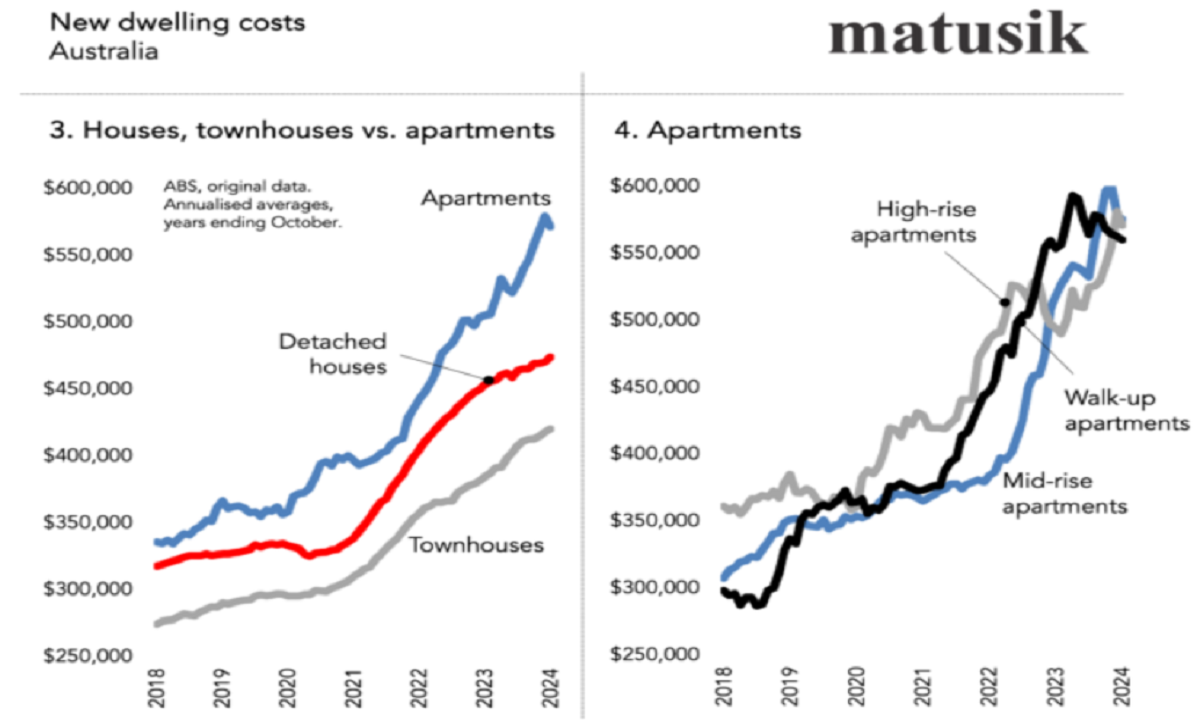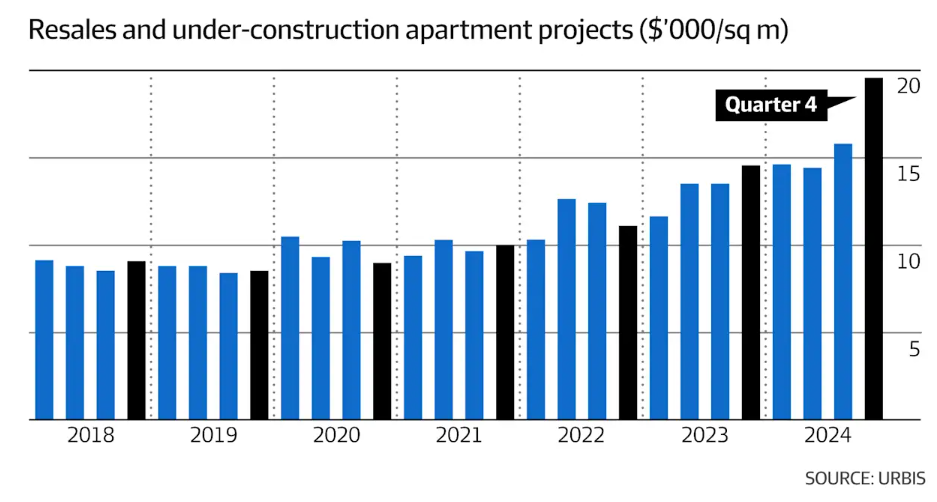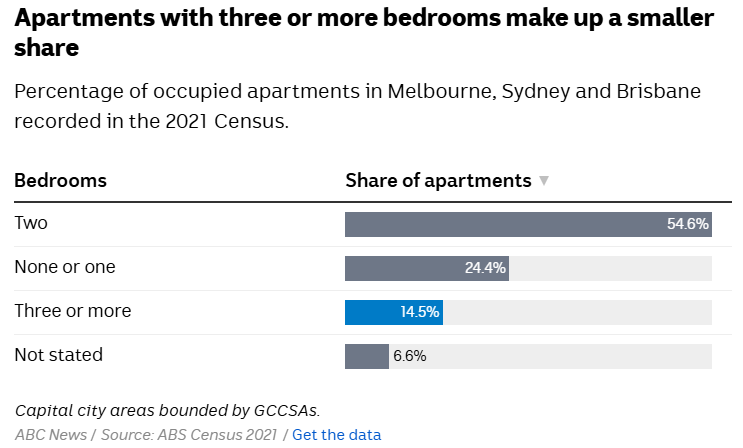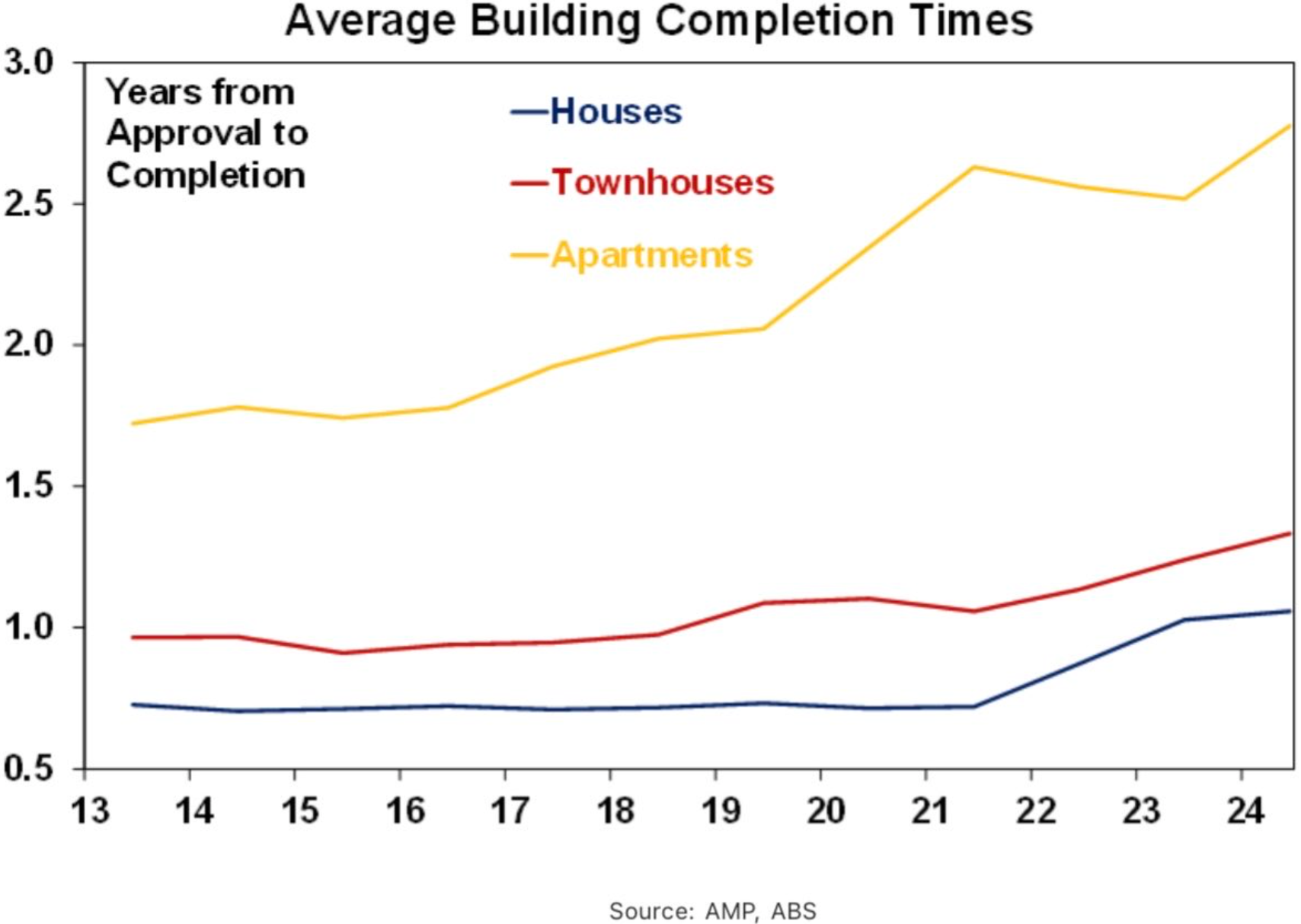State and federal government plans to plaster our cities with high-rise apartments will not improve Australian housing affordability and will ultimately degrade liveability.
The reasons are simple: constructing apartments is too expensive. Consequently, buyers cannot purchase them at a reasonable price.

As Michael Matusik illustrates above, detached houses and townhouses are far less expensive to construct than apartments.
Urbis highlighted the exorbitant cost of apartment development, noting that selling prices in Australia’s main cities increased by a record 24% in the December quarter of 2024, reaching more than $19,000 per square metre.

“In the last couple of years, the majority of sales across the country have been above $1 million, targeting that downsizer market”, Urbis director Mark Dawson said.
Because of the high cost per square metre, developers have chosen to build smaller shoebox apartments. Only a small percentage of the nation’s apartment supply consists of apartments with three or more bedrooms, as shown below.

The construction quality of new apartment complexes in Australia is also poor, and strata fees are high, further limiting affordability.
Last week, Shane Oliver, AMP’s chief economist, highlighted that apartments also take too long to construct.

The years taken to build an apartment in Australia increased from approximately 1.75 in 2013 to 2.75 in 2024. By comparison, it takes around a year to build a house and 1.4 years to create a townhouse.
Last month, the Age highlighted another barrier to increasing apartment construction: the glut of unsold apartments.
There are some 8000 completed apartments in Melbourne—comprising 17% of units completed between 2020 and 2024—that developers have been unable to sell.
“These unsold apartments include those in suburbs earmarked for greater housing density under the state government’s activity centre proposal, raising concerns that the surplus could hinder developers from meeting ambitious housing targets”, The Age wrote.
Richard Temlett, Charter Keck Cramer’s national executive director, said the unsold stock was significantly cheaper than the newest cycle of apartments due to the rising construction costs.
The unsold apartments can be purchased for around $8000 to $10,000 per square metre, whereas apartments entering the market now need to be priced at $12,500 to $15,000 per square metre.
“So it is a concern from the developers’ perspective because that stock needs to be removed from the market so it’s not competing with new stock on price point”, Temlett said.
“It is a major issue because it’s holding back new supply, and housing is only going to get more unaffordable and rents will increase more”.
To add insult to injury, the Victorian State Budget has earmarked that $11.5 billion of funding for the first stage of the Suburban Rail Loop will come from “value capture” levies on the 70,000 apartments expected to be built along the corridor.

Source: Victorian Budget 2023-24
$11.5 billion divided by 70,000 equates to around $165,000 per unit. Such value capture levies would dramatically add to the total cost of apartments, pricing them beyond what buyers can afford.
The economics of the hoped-for apartment boom do not add up.

